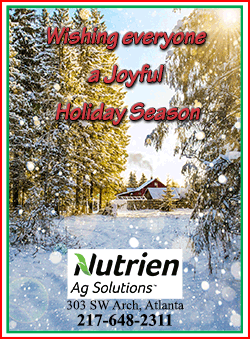|
 Thanksgiving is perhaps the most relaxing national
celebration of the year. It is a down-to-earth time when family and
friends are home for the holiday to gather around the table and join
together in eating the harvest. Thanksgiving is perhaps the most relaxing national
celebration of the year. It is a down-to-earth time when family and
friends are home for the holiday to gather around the table and join
together in eating the harvest.
Wisdom practices such as expressing gratitude, sharing, and giving
are integral to many indigenous cultures and communities. The
Thanksgiving or Harvest dinners usually were three day feasts held
by the European settlement of North America.
What is most astonishing is that we have kept the turkey as the main
course of food during the tradition as far back as the gathering of
the pilgrims and the Native American Indians or the Wampanoag Tribe
in 1621.
Why the turkey?
Why not lizards for the main meal…or a shark from the ocean?

From a firsthand account in Governor Bradford’s journal “Of Plymouth
Plantation” 1620-1647, fowl abounded in Plymouth and Massachusetts
as winter approached. Many inhabitants of the colonies wrote to
their friends in England relaying that besides waterfowl, there were
many wild turkeys. The people also wrote, "although it be not always
so plentiful as it was this time with us, yet by the goodness of
God, we are so far from want that we often wish you partakers of our
plenty."
Benjamin Franklin admired the Turkey over the Bald Eagle to be the
national bird, “For in truth the turkey is in comparison a much more
respectable bird, and withal a true original native of America…he is
besides, though a little vain and silly, a bird of courage, and
would not hesitate to attack a Grenadier of the British Guards who
should presume to invade his farm yard with a red coat on.”
So what is this bird that we celebrate and hold traditional prayer
around? A vertebrate for sure and part of the phylum chordate class.
Is it a tough bird with too many feathers?
There are about 10,000 known species of birds worldwide, though new
research estimates there might be twice that. The wild turkey is an
upland ground bird native to North America and is the heaviest
member of the diverse Galliformes, according to Wikipedia. Although
native to North America, the turkey probably got its name from the
domesticated variety being imported to Britain in ships coming from
Levant via Spain. The British at the time therefore associated the
wild turkey with the country Turkey and the name prevails.

Is it a tough three-toed bird with too many feathers?
Sort of is, but you can never have too many feathers. Wild male
turkeys have an incredible dark, fan-shaped tail and glossy bronze
wings. Its fan feathers are the same length and when they get
excited, their heads get engorged with blood, almost concealing the
eyes and bill. The juvenile males are known as Jakes and have a very
short beard and his tail fan has longer feathers in the middle. Tom
turkeys are much bigger than the females that are called hens. The
hens have duller feathers, in shades of brown and gray but the
primary wing feathers have white bars. Turkeys have 5,000 to 6,000
feathers! When smoked in a smoke house or baked in the oven, the
turkey can turn out tender and juicy and be the perfect centerpiece
on the Thanksgiving table.
Of course turkeys have come a long way since being hunted in the
1600’s. Now there are tom turkey farms that have a range of small,
medium, or large domesticated birds to choose from. The adult male
(or tom) normally weighs from 11 to 24 pounds and measures 39 to 49
inches in length. The adult female is typically much smaller at 5.5
to 11.9 pounds and is 30 to 37 inches long. It is unusual to get a
39 pound bird.
Anytime you go to the store you can buy fresh or a frozen turkey.
Enclosed is the recipe to cook it to its delicious perfection!
Where do turkeys dwell?
According to Wikipedia, the habitat of the wild turkey has a
preference to hardwood and mixed conifer-hardwood forests with
scattered openings such as pastures, fields, orchards and seasonal
marshes. They can adapt to virtually any plant community as long as
coverage and openings are available.
In the Northeast of North America, turkeys are most profuse in
hardwood timber of oak-hickory and forests of red oak, beech,
cherry, and white ash.

The best ranges for turkeys in the Coastal Plain and Piedmont
sections have an interspersion of clearings, farms, and plantations
with preferred habitat along principal rivers and in cypress and
tupelo swamps.
In Appalachian and Cumberland plateaus, birds occupy mixed forests
of oaks and pines on southern and western slopes. They can be found
in Florida sweet gum swamps and cliftonia (a heath) and oak in
north-central Florida.
Be aware turkey hunters--wild turkeys are agile flyers of open
woodland or wooded grasslands. They have very good eyesight but not
at night.
Wild turkeys don’t migrate to distant states that are warmer.
Instead, at twilight, most turkeys will head for the trees and roost
off the ground for protection from predators such as skunk and
opossums and ground hogs. Avian predators of their poults (baby
turkeys) are red and white-tailed hawks, bald eagles and the barred
owl.
Go and watch the turkeys down on the farm. Healthy turkeys like to
strut their stuff and get attention of the females by spreading out
their feathers and dragging their wings across the ground! They also
attract their mates by emitting a low-pitched “drumming” sound,
produced by the movement of air in the air sack in the chest. A
gobble, spit or a kee-kee can carry up to a mile. Hens “yelp” to let
gobblers know their location, but they rarely do so. They are a bit
more humble.
[to top of second column] |

If it is your preference to eat a wild turkey on
Thanksgiving, how do you catch one?
Turkeys in the wild eat a range of vegetation. You can put out
acorns, nuts and a hard mast of hazel and chestnut and hickory
trees. Wild turkeys also eat pinyon pine as well as various berries
and juniper bearberry, and small reptiles. They sometimes can be
caught feeding in cow pastures, or caught scavenging seed after a
harvested crop and they are known to eat some grasses.
Because of cutting down trees, game managers estimate that the
entire population of wild turkeys in the United States was as low as
30,000 by the late 1930’s. By the 1940’s they were almost extinct!
Game officials later made efforts to protect and encourage the
breeding of the surviving wild population. They would do what is
called, “trap and transfer” and wait for numbers to grow, catch the
surplus birds with a projectile net and move it to another
unoccupied territory, and repeat the cycle. This included some of
the western states where turkey was not native. Evidence shows the
bird does well near farmland.
In 1973, wild turkey numbers were estimated to be 1.3 million, and
current estimates place the entire U.S. wild turkey population at 7
M.
Attempts to introduce the wild turkey to Britain and Ireland as a
game bird in the 18th century were not successful due to local
poachers and the lack of winter feed.

What is the right turkey for you?
Choices include: the Rio Grande turkey from Texas and Oklahoma,
Merriam’s turkey from the Rocky Mountains and the prairies of
Wyoming, the Florida peninsula Osceola turkey, the Eastern Wild
turkey encountered by the Puritans, the founders of Jamestown and
the Dutch who lived in New York and Maine. The Arizona Gould’s wild
turkey might suite you best. Take your time and have some fun this
year selecting a geographic turkey. Sure you have your pick at the
market - Butterball, Jennie O, Best Value, Pilgrim’s Pride…and much
more. But this year try something different; get on your internet
and contact a turkey farm and see if they have different breeds you
have never tasted, then order one for Christmas or New Year's. Or
you might enjoy the cold weather and go out hunting for your turkey!
Baking a turkey can be easy! Perfect! Thaw, wash and rinse your
turkey thoroughly. Prepare your dressing and set up for baking the
day before. Just set your alarm around seven or eight a.m. to get
cooking. Adjust your oven racks to allow all around heat and set
your oven temperature to 325 degrees and follow the directions
included with your purchased turkey. Plan 10-15 minutes baking time
per pound of turkey.
Roughly it takes an 18 pounder 3 hours - 3 hours 30 minutes to bake;
14 pounds about 2 hours 30 minutes; 10 pounds - 1 hour 30 minutes.
Are you hosting Thanksgiving this year?
Look like a pro with this simple turkey recipe from YELLOWBLISSROAD
.COM. It is like baking a glorious chicken and you have to rub it
the right way!

A dry rub to try from Yellow Bliss Road:
2 tsp salt,
2 tsp. dried thyme,
1 tsp. dried sage,
½ tsp. paprika,
½ tsp. pepper,
½ tsp. ground mustard.
Allow 24 hours to thaw in the refrigerator for each four to five
pounds of frozen turkey.
Remove the neck and bag containing gizzards and heart from the
cavity of the turkey.
Always use a plastic turkey bag to keep in juices
Insert three pats of butter under the skin of each turkey breast.
The sky is the limit with different kinds of stuffing: berries in
stuffing, nuts in stuffing, butter and stuffing, veggies and
stuffing. It is recommended to bake stuffing in a separate pan.
Place aluminum foil over the turkey breast to gently cook and let
thighs and legs get their roast.
Cook at 325 degrees F. Then increase to 400 degrees and cook another
hour till the skin is golden and crispy without drying out the meat.
Check for doneness using a meat thermometer inserted at the thickest
portion of the turkey. The meat must cook to 165 degrees and dark
meat takes longer to cook than white meat.
Carve below the turkey leg joint to easily remove the legs.
And at last, ahh…the wonderful turkey smells will delight everyone’s
appetite.
Whatever kind of turkey you pick, notice the warmth it brings to the
room, the tender love and care given to each other, and the joyous
atmosphere of sharing quality time. Yes, we are thankful for the
harvest of the year and the gathering of family to praise God for
the grand turkey set before us.
|